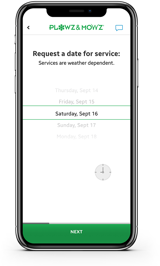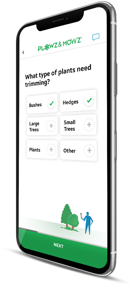WRITTEN BY Cindy
Lawn-care products can be hazardous to your dog or cat, but they don’t have to be.
Your dog and cat spend more time on the grass and in closer proximity to it than we humans do. And they don’t care if the lawn is a green carpet of elegance or a mishmash of grass, dandelions, and other hearty weeds, but, for some reason, we do. What our pets would tell us, if they could talk, is that they want the lawn to be safe to play on.
Lawn-care products can cause disease in pets and humans. While chemicals get the most blame, even natural or organic substances can be harmful if not used properly (remember the old joke that arsenic is natural?).
You probably heard about the study that says the popular herbicide glyphosate has been found in small amounts human urine. Higher levels were found in urine from pet dogs and cats. That means it’s in our systems. It’s in our drinking water, too, because runoff is a big problem. The chemical has been in use since 1974, and studies have linked it to cancer in dogs and in humans. But it’s still for sale, and we still use it. How can that be?
Many researchers believe it’s an element of how and how much the chemicals (or organic products) are used than the actual products themselves. The Environmental Protection Agency, or EPA, says glyphosate is not harmful when used properly. (“There’s the rub,” said Hamlet.) Do you read and follow instructions well, so you are sure that you apply it properly?
Hire a Professional
A farmer once told me that it surprised him that he had to take a safety course and be licensed to apply certain herbicides and pesticides to his crops, while anyone can run to the local Home Depot and buy the same stuff. Of course, the farmer knows it’s an issue of how much of the product the farmer—a commercial enterprise—needs to control weeds in his 5,000 acres of crops versus what the average homeowner uses. He’s at higher risk. But that’s not my point. My point is that the farmer received education on how to be safe.
That’s what you’re getting when you hire a lawn-care pro to apply any weedkillers you need. Education. If you see an ad for professional lawn-care products, you’re paying for a safe method of application, which can make the difference to your pet’s (and your) safety.
All lawn-care professionals need a commercial pesticide application license (in most states) to use these products. Like the farmer, they must be educated and show they understand how much weedkiller to use and how to be safe when using it. It’s also why a pro puts signs along the perimeter of a property they treated to warn neighbors of the application, while Joe Homeowner gets to just merrily spray away.
What You Should Know
The more you use a chemical, the higher your risk. Safety involves reducing how often you use a herbicide (or pesticide, insecticide, etc.) and how well you follow directions for application. That’s the tricky part. You need to read and understand the instructions, which may involve math. It also may mean measuring your lawn. Are you sure your lawn is 10,000 square feet or is it more like 7,500 when you deduct the space your house is using? It matters.
Choose your product and then ask the product manufacturer for its Safety Data Sheet, so you can read for yourself the risks. There must be one, but you aren’t likely to find it on the package. Instead, go to the website (many post a PDF of their SDS) or request one.
Keep Your Pet Safe
Follow label instructions. Spray no more than recommended in the instructions.
If the label says wear gloves, wear gloves. Although it’s not always recommended, many people also wear safety goggles and masks—you have extra masks around the house, don’t you?—when applying the product.
Take pet precautions to the highest level. If it says to keep your dog off the lawn for 24 hours. Do it. Do the front yard one week, and the back yard the next, so you have a place to walk the dog. Better yet, consider these instructions from the Oklahoma Veterinary Specialists: Keep your dog off the lawn for 48 hours. If you see signs of toxicity, such as burns or rashes around the mouth or nose, uncontrolled drooling, gastric problems, loss of appetite, lethargy, or fits or seizures, get your dog to the veterinarian right away.

























